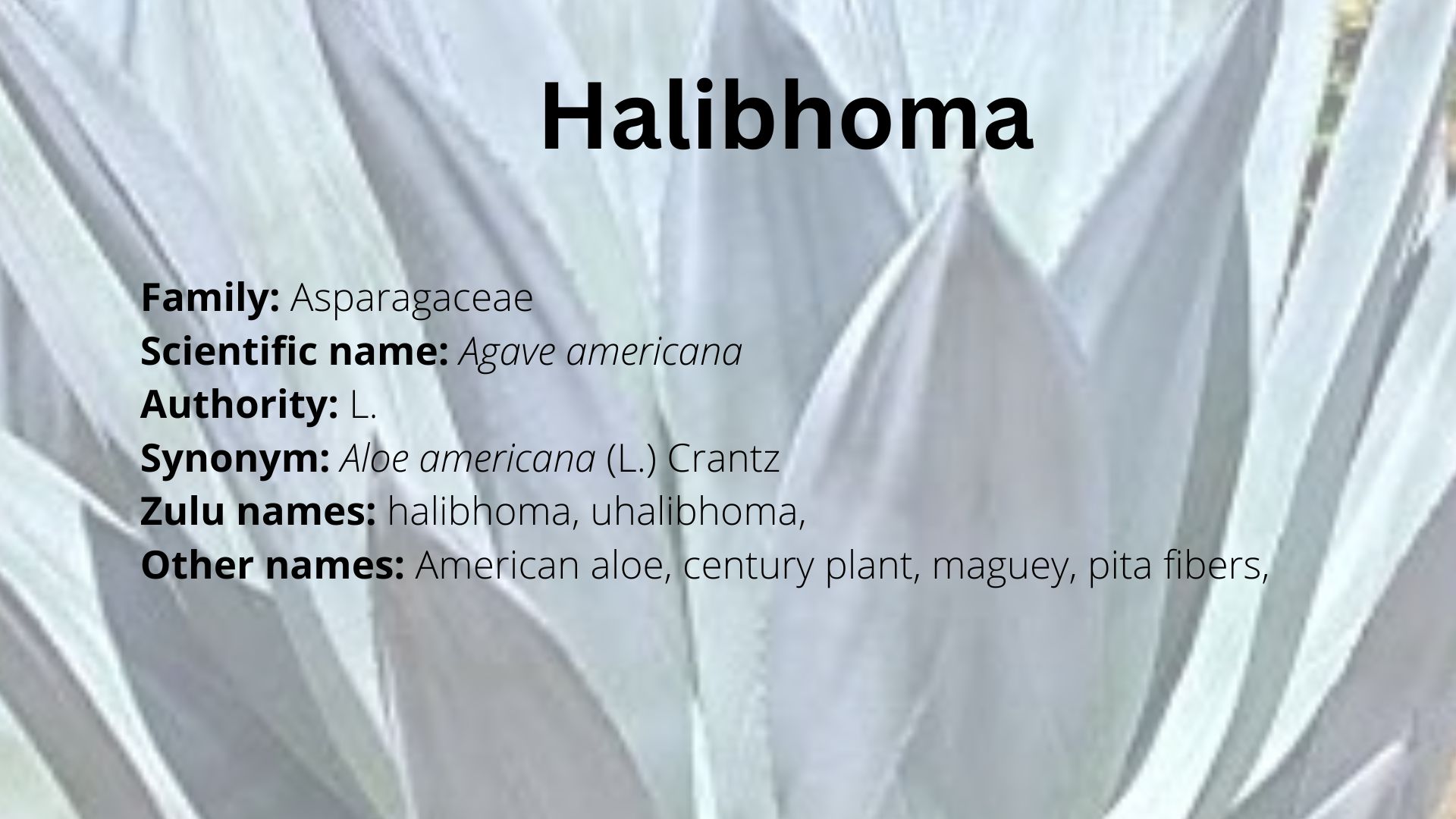Family: Asparagaceae
Scientific name: Agave americana
Authority: L.
Synonym: Aloe americana (L.) Crantz
Zulu names: halibhoma, uhalibhoma,
Other names: American aloe, century plant, maguey, pita fibers,
Description: A.americana is a large succulent with gray-green fleshy rosette leaves that have spiny margins and a sharp tip as well as greenish-yellow flowers that only blossom at the end of the plant’s life. The plant is native to the United States and Mexico and naturalised in South Africa.
Uses:
- The plant is fermented and distilled to make a traditional alcoholic drink in Mexico, known as pulque.
- The leaves are ground and put in drinking water to treat nematodes in chicken.
- The plant is used as a detergent, diuretics, emmenagogue, laxative, and insecticide.
- The leaf sap is used to treat scurvy.
- The leaves and roots are used to treat syphilis.
- The plant is used as a source of fibre for weaving bags, mats, ropes, and twines.
- The plant is used as a substitute for soap.
- The plant is cultivated as a garden ornamental and a hedge plant.
Reference and further reading:
- Cherpelis, B.S. and Fenske, N.A., 2000. Purpuric irritant contact dermatitis induced by Agave americana. CUTIS-NEW YORK-, 66(4), pp.287-290.
- Hulle, A., Kadole, P. and Katkar, P., 2015. Agave Americana leaf fibers. Fibers, 3(1), pp.64-75.
- Kadam, P.V., Yadav, K.N., Deoda, R.S., Narappanawar, N.S., Shivatare, R.S. and Patil, M.J., 2012. Pharmacognostic and phytochemical studies on roots of Agave Americana (Agavaceae). International Journal of Pharmacognosy and Phytochemical Research, 4(3), pp.92-96.
- Kerner, J., Mitchell, J. and Maibach, H.I., 1973. Irritant Contact Dermatitis From Agave americana L: Incorrect Use of Sap as Hair Restorer. Archives of Dermatology, 108(1), pp.102-103.
- Majola, N.G., 2018. Use of indigenous methods to control gastro-intestinal nematodes in chickens (Doctoral dissertation).
- Zwane, P.E., Masarirambi, M.T., Magagula, N.T., Dlamini, A.M. and Bhebhe, E., 2011. Exploitation of Agave americana L. plant for food security in Swaziland. American Journal of Food and Nutrition, 1(2), pp.82-88.

